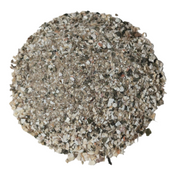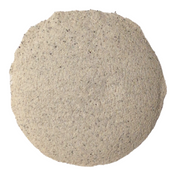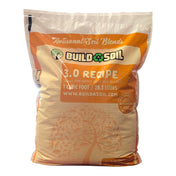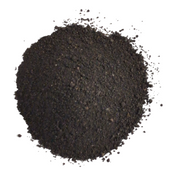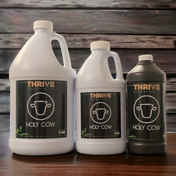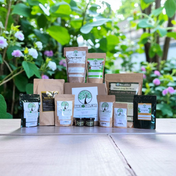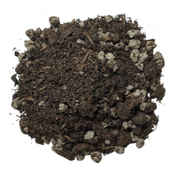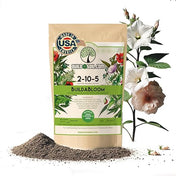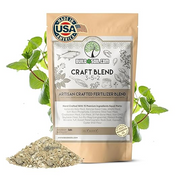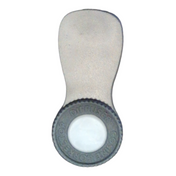When I found out how all these fertilizers are made, and what's really in them, I was disgusted and wanted to do something about it. I'm hoping that when you find out, you'll understand why I carry Neem and Alfalfa instead of Blood etc.
You may have noticed that I don't carry certain popular items and there is good reason for that. I'm not here to impart my beliefs on you, but to share information openly and honestly so that you can make the most educated decisions possible. Nowadays it's easier to find out what is in your opiate based prescription pills than it is in your food. When people tell me they're vegan and only eat organic, I sometimes wonder if they understand how most organic fertilizers are made. I would tell them, but I don't want them to starve to death. (For the record, I eat organic as often as possible, but homegrown is the best!)
Lets work our way through the pile of waste products first, and don't forget to check the labels on your favorite bottle of organic fertilizer!
Always follow the money. The most common organic fertilizers are also the cheapest. That's how business works. Just like everything in the world, you have some good and some bad. Turns out the Bad stuff is the cheapest to produce and the cheapest to consume for the all the large organic farmers. If we all start demanding better fertilizers for ourselves then viable business channels open up for producers of the high quality organic products and prices will come down. Right now, it's up to us to educate each other and do what we can in our sphere of influence.
1. Blood Meal: Uber Cheap High Nitrogen Content
Here is the OMRI info http://www.omri.org/simple-gml-search/results/Blood%20meal
Notice there is no requirement for the cows to be organic.

Are you 100% confident that all the blood being used is free of any drugs, hormones, toxins etc?
I'm not, and it turns out there is good reason to question the industry practice.
Blood meal is made from dried blood that is literally scraped from the slaughterhouse floor. Even those farmers that use it admit that it is dangerous to breathe and can carry a number of harmful pathogens.
Warning for animal lovers: Blood meal may attract your pets or other animals and if ingested can cause vomiting and diarrhea. Ingesting blood meal can also result in severe pancreatitis (inflammation of the pancreas) which is bad news for your pup.
2. Feather Meal:
Antibiotics and other drugs found in feather meal samples. That should be enough to show you how convoluted the feather meal industry is. This is another waster product from slaughtering animals. Now, I'm all for recycling, but not with all the drugs still in the feathers. Heck, I have my own chickens, and I wouldn't hesitate to use ANY of their waste products. They are free range on my property and eat my vegetable garden scraps with a wide variety of bugs and worms
from the yard. Now that is Organic!
Here is a quote from an article sited below:
"To do this, they examined 12 feather meal samples from the U.S. (n=10) and China (n=2). All 12 samples contained at least one antibiotic residue, and some contained residues of 10 different drugs (both of those were from China). While many of the antibiotics were ones used in poultry farming (or their metabolites), they also found drugs they did not expect. Most significantly, this included residues of fluoroquinolones, which they found in 6 of 10 U.S. feather meal samples. Why is this important? Fluoroquinolone use was banned in U.S. poultry production as of 2005 because of the risk to human health–so where are these residues coming from?"
Source: http://scienceblogs.com/aetiology/2012/04/05/waste-not-want-not-poultry-fea/
3. Soybean Meal: Cheap Cheap Nitrogen
Soybeans are one of the most common Genetically Modified Crops of all time. So if you are into organic gardening, I would just stay away from the crop completely. Those that are into the health food trends will also recognize that the industry has been moving away from soy for quite some time. Although most "organic" soybean meals are extracted through somewhat safe methods, there is a whole industry that extracts soybean oil with hexane. Hexane is very harful to animals and humans. Once you understand that most manufacturers mass purchase ingredients from other countries and use shady business practices to increase profits, you will start to question the purity of your ingredients. Not all companies are using questionable products, but there is absolutely NO reason to use soybean meal because it is so easy to replace in your gardening program.
4. BioSolids aka Sewer Sludge -
The majority of sewage sludge is hauled away in trucks and disposed of on American farms. Some is given away or sold as “compost.” Some is dried and made into pellets, bagged, and sold as fertilizer. And sometimes sludge is “blended” into bagged fertilizers. There is no labeling requirement. Sometimes the product is called “biosolids,” sometimes not. If sewage sludge -- whether “treated” or not -- is used as a fertilizer on crops, the food from these crops cannot receive USDA organic certification. But there is no federal rule that forbids non-organic fertilizers from using the term “organic.” The grower must know what he or she is putting on his or her fields. Gardeners, too, have to do some investigative work if they buy compost or fertilizer.
The largest marketer, processor, and hauler of sludge is Synagro, Inc., a company owned by the Carlyle Group.
Branded Products Containing Sewage Sludge
(If you have a sludge product to add, please send information to info at sludgenews.org.)
All-Gro (Synagro)
Granulite (Synagro)
Chesapeake Sunshine
EarthMate (Philadelphia, PA)
Nutri-Green (Virginia Beach, VA)
MetroGro (Madison, WI)
ORGRO (Baltimore, MD, Veolia Water North America)
Bay State Fertilizer (Boston, MA)
GroCo (Seattle, WA)
SilviGrow (Seattle, WA)
Oceangro (NJ)
TAGRO (Tacoma, WA)
SoundGro (Pierce County, WA)
Milorganite (Milwaukee, WI)
WeCare Compost (NY)
CompostT (Pennsylvania)
EKO Compost (Missoula, Maui, Lewiston plant on Idaho-Wahington border)
Dillo Dirt (Austin, TX)
Glacier Gold (Olney, MT)
EarthBlends (New York City, a product of Synagro, sold by WeCare)
Agresoil (MA)
Earthlife (New England, a product of New England Organics)
TOPGRO (Los Angeles, CA)
N-Viro Soil
N-Viro BioBlend
Landscapers' Advantage (Camden, NJ)
Hou-Actinite (Houston, TX)
ComPro (Washington, D.C.)
Mine Mix (Philadelphia, PA)
Kellogg Nitrohumus, Gromulch, Amend and Topper (Kellogg Garden Products, Los Angeles, CA)
Growers' Blend by Earthwise Organics (a Synagro subsidiary)
Unity Fertilizer (Unity Envirotech LLC, Florida-baded)
Miracle-Gro Organic Choice Garden Soil (Scott's Miracle-Gro Company says, "Some of the most common organic plant foods are bone meal, cottonseed meal, blood meal, fish emulsion, activated sewage and manures.")
http://www.sludgenews.org/about/sludgenews.aspx?id=5
5. Cottonseed Meal:
Again, another GMO crop that is highly sprayed. Many organic programs do not allow the use of cottonseed meal. But, you will still find it as one of the most common ingredients in organic fertilizers.
Need I say More? Just stay away, it's easy to replace.
6. Bone Meal:
Bones are stripped, dried, and ground. It is used for its high phosphorus and calcium content despite the fact that bone meal is dangerous to breathe and has been suggested as an agent for spreading Creutzfeldt-Jakob disease (CJD) (the human form of bovine spongiform encephalopathy “mad cow disease”) to humans.
“Do you feed your roses with bone meal? Not a good idea, says the world’s foremost expert on a group of rare diseases, found in animals, that sometimes make their way into humans. Breathing in the dust from contaminated bone meal could be deadly, says Dr. D. Carleton Gajdusek (GUY-doo-sheck), a brilliant Harvard Medical School graduate and Nobel laureate. In his latest book, Deadly Feasts (Simon & Schuster), author Richard Rhodes traces the history of these diseases, called spongi-form encephalopathies, that reduce the brain to a spongy mass, causing their victims to stagger, fall, develop dementia and paralysis, and soon die a terrible death.” - “Mad cow disease” from feeding your roses? – Medical Update September 1, 1997. Brown, Edwin W.
Bone Meal can also be a danger to your pets. If an animal consumes a large quantity of bone meal (for their size) it will form a cement-like ball in their stomach, which may block the digestive track and need to be removed by surgery.
http://gentleworld.org/whats-hiding-in-your-organic-fertilizer/
Others to avoid:
Corn Meal, Urea, Urine and many others.
The main point of this article is make you think. If you would just consider where the ingredient may have come from you will be much better off than the average gardener. Then start purchasing products that don't contain questionable ingredients. Or better yet! Start growing your own plants to make fertilizer with.

